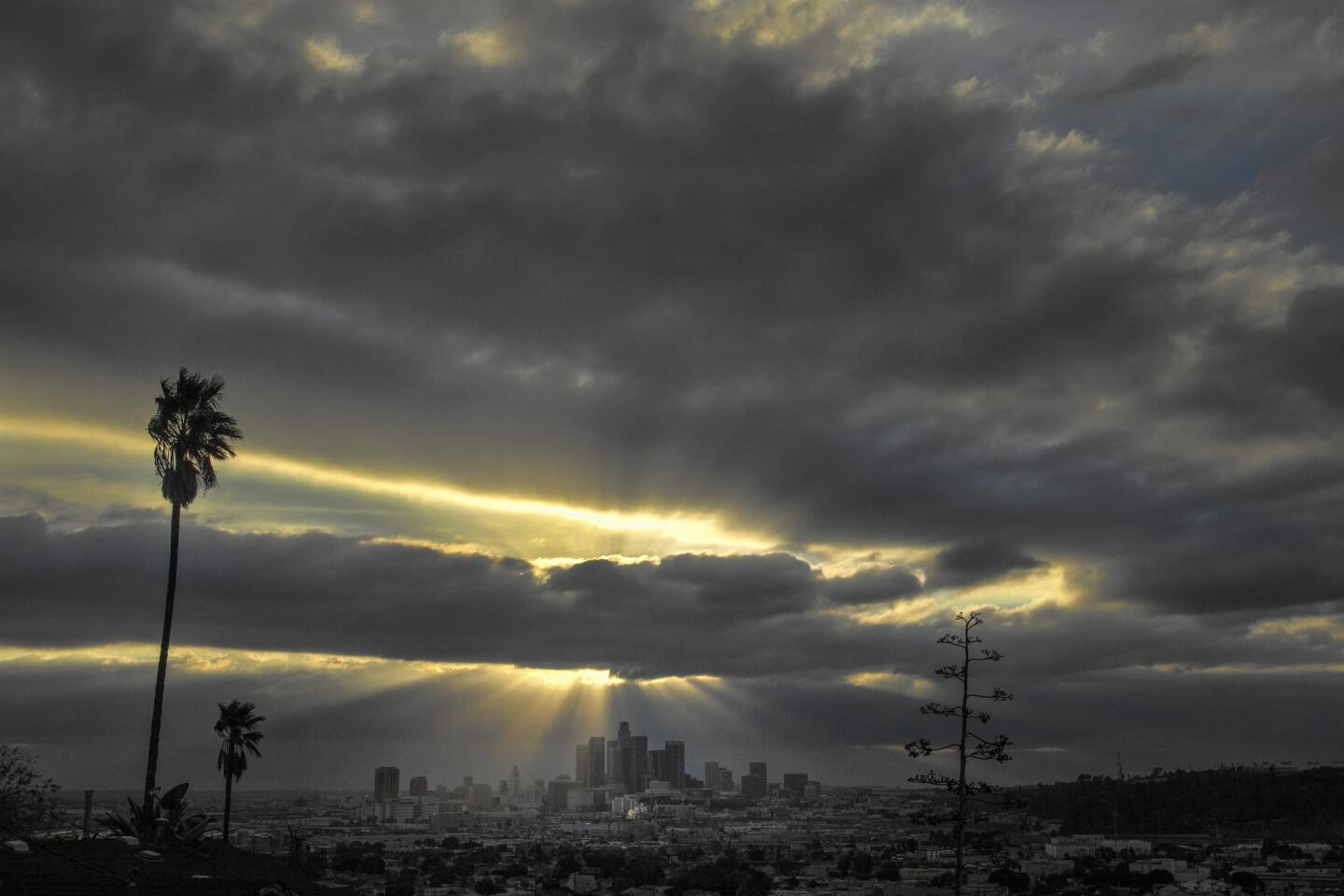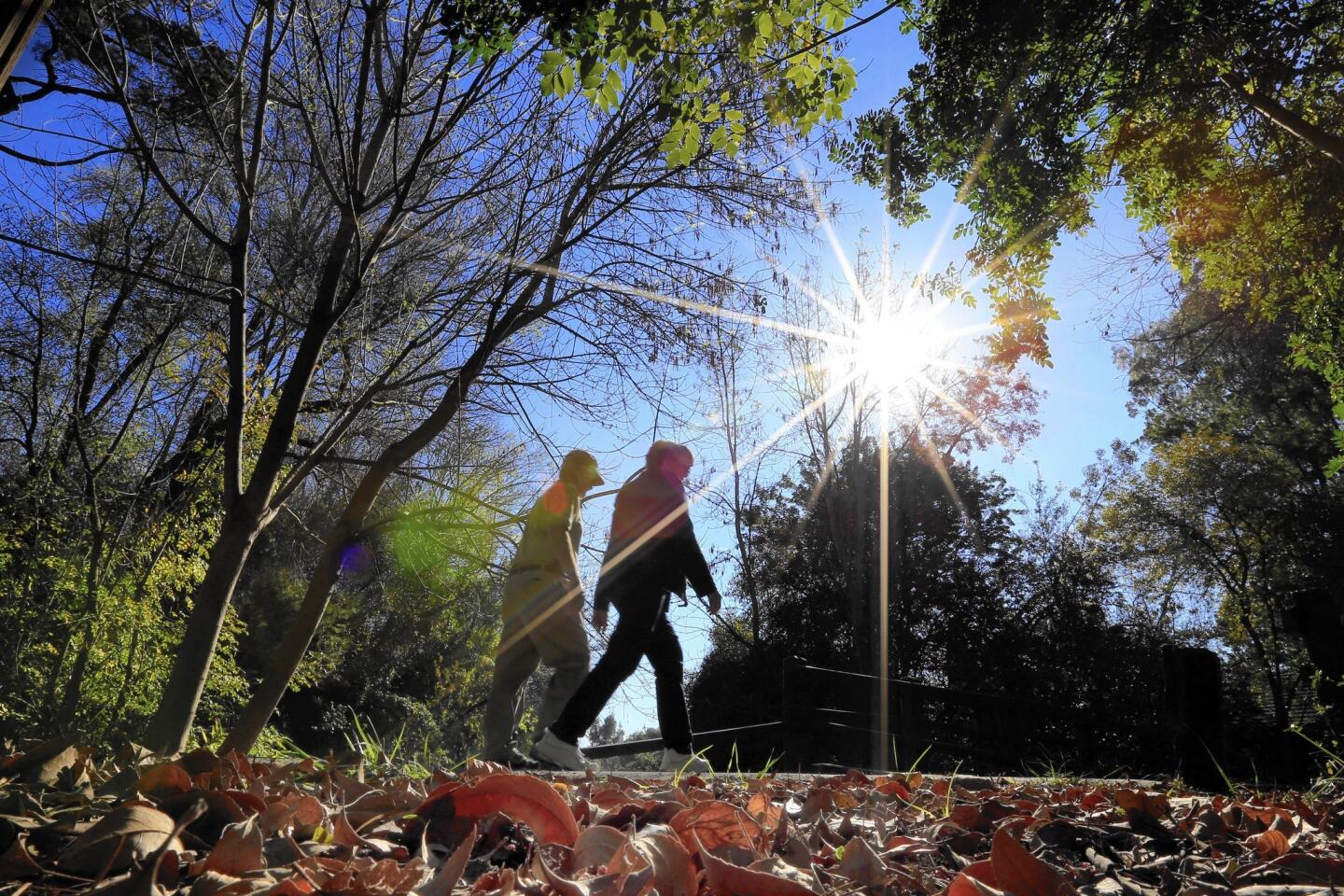Southern California could face above-normal rainfall in next 3 months
- Share via
After one of the driest Januarys ever in California, there may be a glimmer of hope for the parched state: There’s a slight chance of above-normal rainfall for Southern California over the next three months and an even chance for the rest, according to the latest climate models.
But when the drought will end remains an open question.
Long-range weather is notoriously difficult to predict, but modeling done by the National Oceanic and Atmospheric Administration, based on sea surface temperatures and other factors, show a possibility that Southern California could experience slightly above-normal rain in the February-through-April period.
“They’re hedging slightly to above normal but barely above normal,” said Jayme Laber, a hydrologist with the National Weather Service in Oxnard, who did not work on the modeling. “If we could just get a normal amount of rain, it would be better than what we have.”
The three-month forecast posted at the Climate Prediction Center on NOAA’s website shows the slightly above-normal rainfall possibility.
“These outlooks, they’re tough to make,” Laber said. “You just don’t have a lot of data.”
After unusually heavy storms hit California in December, prodding the state Department of Water Resources to increase water deliveries to State Water Project customers, San Francisco received no rain in the month of January for the first time in 165 years — or during the Gold Rush.
New rainfall figures released Monday show California is at 85% of normal rainfall for this time of year, with an average of 23.1 inches of rain as of Monday, according to the state Department of Water Resources.
In contrast to San Francisco, it’s not unusual for Southern California to receive little to no rain in the first month of the year, said Bill Patzert, a climatologist at the Jet Propulsion Laboratory.
“In San Francisco, you always get something in January, so it’s a little more spectacular when you get nothing,” Patzert said Monday. “L.A. always has a dry month in the wet season.”
Looking ahead over the next two months, Patzert said, more rain will not erase years of drought.
“Everybody has got their fingers crossed for a February and March miracle, but even if that happens, there’s no way we’re out of this drought,” he said.
Water experts have said the state would need about 75 inches of rain by Sept. 30 at eight stations in the Northern Sierra where precipitation is measured to end the drought.
When California’s drought does finally end, it could happen with a torrent of winter storms that stream across the Pacific, dumping much of the year’s rain in potentially catastrophic downpours. These powerful storms known as atmospheric rivers have broken 40% of California droughts since 1950, recent research shows.
If atmospheric rivers fail to arrive, California could be in serious trouble, which is what happened last winter when a ridge of high pressure lingered off the West Coast for months, blocking storms and intensifying the drought.
California experienced a repeat of that scenario in January.
Unlike in the Bay Area, some rain fell farther north, but it was a mere 0.8 inch, a hair more than what Santa Rosa usually gets in the hot, dry month of August.
“The lack of precipitation for the entire month puts us into the exact same situation where we were last year,” said Grant Davis, general manager of the Sonoma County Water Agency, “going into the fourth straight year of a drought and needing to maintain our very aggressive conservation efforts.”
Santa Cruz also recorded no rain in January for the first time since 1893, according to the National Weather Service. Normal rainfall for that city in January is more than 6 inches.
For the Bay Area as a whole, last month was the driest January on record, the weather service said.
A storm headed to Northern California this week could deliver snow to the Sierra and as much as 6 inches of rainfall to other parts of the region.
The storm may reach Santa Barbara County late Friday and Saturday, but it’s not expected to travel any farther south, said Kathy Hoxsie, a meteorologist with the National Weather Service in Oxnard.
“It’s possible between now and the end of the week it might get a little closer,” Hoxsie said. “It would be good if we could get a little bit of it coming down here as well.”
amanda.covarrubias@latimes.com
Twitter: @amcovarrubias
Twitter: @leeromney
More to Read
Sign up for Essential California
The most important California stories and recommendations in your inbox every morning.
You may occasionally receive promotional content from the Los Angeles Times.

















